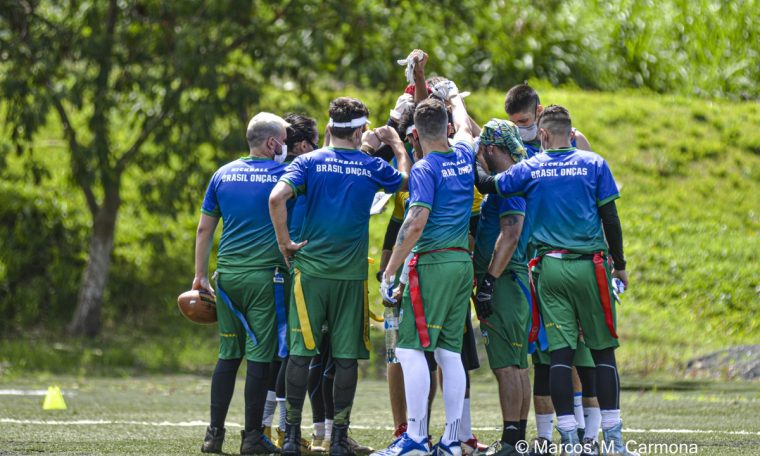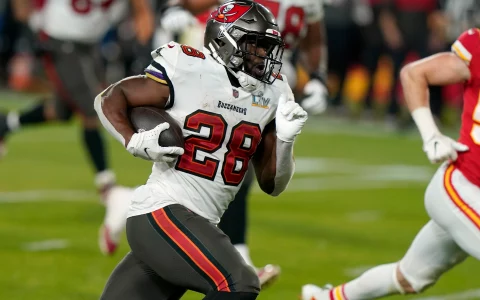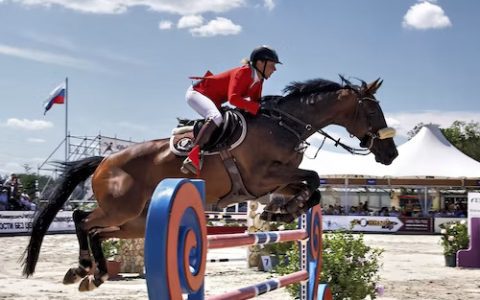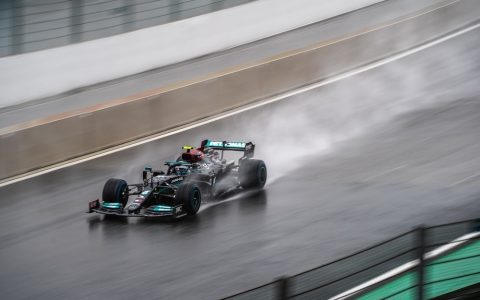
After months of struggling to participate financially in the tournament, it’s time to get on the ground and compete. The IFAF (International Federation of American Football) on Wednesday announced the groupings of World Flag Football, a sport that is a non-contact variation of traditional American football and supported by the NFL to integrate the program of the Olympics in Los Angeles. . Angeles in 2028.
a men’s team, newcomer to the competition, will be in Group C, with Denmark, Italy, Spain, Japan and Switzerland. Me and Woman, which is going into its 5th partnership, will be part of Key D, with Mexico, Israel, Denmark, Japan and Slovenia;.
The national teams took part in a training camp in October – Photo: Marcos M. Carmona/CBFA
Since this is an amateur sport in Brazil, the main obstacle to the attendance of our teams was the financial part. Between tickets, accommodation and other costs, each athlete will pay approximately R$ 10 thousand out of his own pocket, with some raffles and collective funding trying to reduce the amount. The CBFA paid a portion of the tournament fees.
It is my dream to represent my country in an international competition in a World Cup. Line up with 14 other people of completely different places and accents and listen to the Brazilian national anthem with the Brazilian flag. It’s certainly invaluable – said Nicolas Quadro, athlete on the men’s team and Floripa Ghosts.
Nicolas Quadro defended the Floripa Ghosts and was called up to the Brazil national team – Photo: Marcos M. Carmona / CBFA
What is Flag Football?
Flag football was created as a non-contact alternative to traditional American football. Instead of knocking the opponent down, play is stopped at the flag when the defender removes one of the ribbons attached to the player’s belt along with the ball. This makes the sport more accessible than the traditional version, as it eliminates the need for expensive equipment and is apparently safer for practice.
There are a few variations of flag football, but the most popular one that will be played in the world is 5×5. Apart from the lack of contact, there are differences from traditional American football:
- Each team has five players on the field instead of 11 in the original version.
- The area is small, 70 yards (64 m) long by 25 yards (23 m) wide, including the endzone.
- The match consists of two periods of 20 minutes, with 25 seconds to start each move and the clock stops only when possession of the ball is changed or in the last two minutes when one of the teams wins for the first time. Each team is entitled to two timeouts per team.
- All players on the field are eligible to receive passes, there is no offensive line.
- No field goal or punt.
- With the exception of interception, campaigns always begin at the 5-yd-line of defense.
- The first player to be snapped cannot advance the ball.
Flag football is a very integral part of the development of the sport around the world. It’s cheap because you don’t need equipment, you start a league with fewer players, you don’t need specific areas with specific positions. Starting cost, number of players to play and field requirements make it a better alternative to tackle football for development, not to mention the fact that no contact makes it safer – international football Federation president Richard McLean said, to GE.
Can it become an Olympic sport?
With the Olympics returning to the United States in 2028, the movement for American football, the most popular sport in the country, to be part of the Olympic program gained momentum. Since it would be too difficult to contain for a number of reasons, such as the size of each team (over 50 athletes) and the difficulty of fitting into a full competition in two weeks, flag football emerged as the best option.
According to a “Reuters” article in April, the NFL offered support to the International Football Federation to help include the flag in the program of the Los Angeles Games in 2028. The Games will already be part of the program of the World Games 2022, an international sporting event that includes sports that are not part of the Olympics, and the 2024 World University Games.
The Brazilian women’s flag football team enters its 5th edition of the World Cup – Photo: Marcos M. Carmona/CBFA
Flag football, with smaller squads and the possibility of playing more games in a shorter duration, would be a better fit at the Olympics. In addition, there is a greater balance of forces than in the conventional version. In men, the US won four of the nine editions, while in women the country won the title only once..
The IFAF strives to be fully recognized by the International Olympic Committee, as it currently has provisional recognition. This could happen in 2021 and will be an important step towards integrating the 2028 Olympic programme, while the federation already talks with the organizing committee of the event.
Like American football, flag football is a short-lived sport in Brazil. The development of traditional modalities drew the flag together, which is attractive for the reasons mentioned above, such as low cost and lack of physical contact, which make it safe.
– With the development of American football in Brazil, the flag grew with it, mainly because it is an easier sport, more accessible and cheaper to practice, apparently given our financial reality. American football equipment is very expensive, and besides, it is easy for you to present 14, 15, 16 year olds to flags. We still have a lot to develop, but we are on the right track – said Nicolas Quadro.
Flag Football Women’s Team — Photo: Marcos M. Carmona/CBFA
If the men’s team debuts at the Worlds this year, the women’s team is already sealed in this competition. Brazil has participated in the last four editions showing clear growth: 12th place in 2012, 10th in 2014, 6th in 2016 and 6th again in 2018, with the right to defend MVP of the tournament for Pamela Pérez.
– When we introduced Women’s American Football and Flags in Brazil in mid-2007, a little later in 2011 we received an invitation to participate in the 2012 World Cup in Flag Football 5×5 Modality. We didn’t know the mod, we played 8×8, and when we met immediately, we fell in love and realized that with the same strategy dynamics, super intelligent, there are many differences and completely different modalities- There are ways. Victoria Guglielmo, the coach of the Brazilian women’s team and a participant in four editions of the World Cup, said that we fell in love with her, apart from thinking a lot that since 2012 they have been talking about a possible Olympic modus operandi. are. As a player and a defensive coordinator.
The Flag Football World Cup has taken place every two years since 2002, with the men’s and women’s editions always taking place at the same venue. In 2020 the competition will be held in Denmark, but the pandemic forced it to be cancelled. The tournament then moved to 2021 and Will be in Israel from 6 to 8 December.
The women’s will consist of three groups of five teams and one of six, a total of 21 countries. All teams face in the same bracket and the top two from each qualify for the knockouts starting in the quarter-finals.
- Group A: USA, Spain, France, Team Neutral*, Finland
- B Group: Panama, Belarus, Italy, Czech Republic and Chile
- Group C: Canada, Austria, Germany, Sweden and Switzerland
- Group D: Mexico, Israel, Denmark, Japan, Brazil and slovenia
In men, the dispute format is similar. The only difference is the number of participants, which will see 24 teams divided into four groups of six. Are they:
- Group A: United States, Canada, France, Sweden, Chile and Slovenia
- B Group: Austria, Panama, South Korea, Team Neutral*, Belarus and India
- Group C: Denmark, Italy, Spain, Japan, Switzerland and Brazil
- Group D: Mexico, Israel, Germany, Finland, Thailand and Slovakia
*- The NUTRO team is the Russian national team, which still cannot compete using the country’s colors and names due to a suspension for a doping scandal, the same one that sent its delegation to the Olympics as the Russian Olympic Committee. inspired.
Among women, the great powers in sport are the United States, Panama and Mexico. At the bottom, only Austria, Canada and Brazil are visible, which was ranked sixth in the previous two editions of the World Cup.
Brazil’s flag teams attend a training camp in So Paulo in early October – Photo: Marcos M. Carmona/CBFA
In the men’s tournament, the United States, with the champions of the last three editions and four titles in general, emerge as the big favourites. Denmark, defeated by defending European champions and Danish team Italy, as well as Austria and hosts Israel are strong.
Calendar (Brasilia Time):
- 6/12 – 9:30 am: Brazil x Spain
- 6/12 – 12:00: Brazil x Japan
- 6/12 – 4:30 PM: Brazil x Switzerland
- 12/7 – 8:15 am: Brazil x Denmark
- 12/7 – 10:45 am: Brazil x Italy
- 6/12 – 8:15 am: Brazil x Slovenia
- 12/6 – 10:45 am: Brazil x Mexico
- 12/6 – 1:15 pm: Brazil x Denmark
- 12/7 – 2 hours: Brazil x Japan
- 12/7 – 4h30: Brazil x Israel
Call for Men’s Team
- Adan Rodriguez (Receiver) – Coritiba Crocodile
- Flag Alexander “Menorito” Coimbatore (Defender) – Kings
- Bruno de Souza (Defender) – Bulls Potiguares
- Felipe “Feijoa” Alves Leite (Defender) – Campo Grande Predators
- Fernando Takai (quarterback) – So Paulo Buzu
- Guilherme Belliero (Defender) – So Paulo Buzz
- Gustavo Bionni (Receiver) – Campo Grande Pradadores
- Joao Felipe Couto (Blitzer) – So Paulo Buzz
- Leonardo Hirai (Defender) – Sorocaba Braves
- Leonardo “McLovin” Rodrigues (snapper and receiver) – So Paulo Buzz
- Lucca Germano (Receiver and Quarterback) – So Paulo Buzz
- Marcos Vinicius “Sea” (Receiver) – So Paulo Baz
- Nicolas Quadro (snapper and receiver) – Floripa Ghosts
- Rafael Polidoro (Defender & Blitzer) – So Paulo Buzz
- Renato Mumford (Receiver) – Bulls Potiguares
Call for Women’s Team
- Alessandra Rodrigues de Souza (quarterback) – Spartans
- Amanda Bobaid (defender) – Brasilia Selvagens
- Ariane Aparecida Lozada (Receiver and Blitzer) – So Paulo Storm
- Carolina de Lima (defender) – Cobras
- Ester Bis d’Alencar (Receiver, Iron and Blitzer) – Antares
- Karoline Furoni de Abreu Souza (Defender) – Hillbillies
- Karoline Priscilla dos Santos (quarterback) – Brasilia Selvagens
- Kelly Araujo Silva das Dores (Defender) – Antareso
- Lara Faraz Torelli (Receiver and Center) – Pied Hannuso
- Lara Rodrigues Nesralla (Receiver and Blitzer) – Brasilia Selvagens
- Luiza Calaca Martins (centre, receiver and blitzer) – Antares
- Mariana Martins (Defender) – Antares
- Taissa Alenker (Receiver and Blitzer) – Cobras
- Pamela Perez (Defender) – Brasilia Selvagens
- Pamela Pereira (Defender) – Phoenix
The Flag Football World Cup will seat eight World Games, which will take place in the United States from July 7 to 17 in the city of Birmingham, Alabama next year. And to be there is the aim of the Brazilian team, for both women and men.
– Getting into the top 8 teams (that’s the goal). The top eight qualify for next year’s World Games in the United States.. And the World Games are a preparatory competition for the Olympics. Every sport that entered the Olympic Games has gone through the World Games. And it is the dream and wish of everyone who hoists the flag. That very soon it could be an Olympic sport and that Brazil could also be involved to participate in it. The level is very high and the goal is complicated, especially for a men’s team that has never participated, but we know it is possible and we are 200% focused on this goal – said Nichols.



